
For many years Nokia was a trendsetter in a mobile phone world. And having expanded its model line a few years ago it didn't manage to hold the appearance of its many models even series of devices. Their functional and design similarity made the devices look completely alike. No doubts in each product line the similarity was stressed with the same design elements but this all made not the best impression of sameness. The situation started to change rapidly in the middle of 2004 and the external difference with the inner similarity grew more important. That would seem the company found that golden mean in technology and the appearance of the device and learned to produce well-balanced solutions. And the ergonomics is becoming a determining factor again or will become in the nearest future. The changes are gradual and are seldom seen with a naked eye but they exist. We would hardly see a striking keypad with the least comfort in use. The company rather tried to attract attention with other design elements. And the changes of the developers' and designers' opinions do gladden. At the same time Nokia doesn't refuse manufacturing extremely designers' models for a small audience. These devices would certainly cost more than average ones (I just long to say serial but both the lines actually are).
Nokia 6170 may be considered the first system experience in dividing into mass and niche models. This device was intended as a pilot balloon before releasing several models with the same promotion idea. But due to some reasons the device was a bit late and didn't become a trial balloon. The second example is Nokia 6260; this smartphone in a clamshell form-factor is a typical fashion device and the sales proved this fact (the audience is quite glamour). I can't but tell that as far as I noticed that in a month after the sales had started many girls showed off with the model at high society parties. In the 90 percent of cases the girls were not tall blonds (an evident tendency of a separate social group). Discussing the peculiarity with colleagues showed even more interesting results. They all proved that's right and these girls follow the fashion too much to use the model longer than 1-1.5 months. And here is an excellent audience with high speed of changing a model and the only disadvantage is that there are too little of them, the niche is permanent and rather fixed.

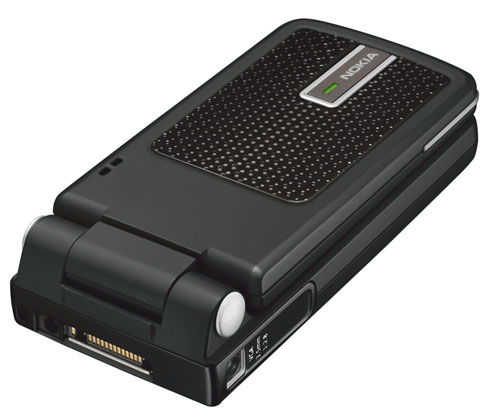
Here many of you may start to disagree with me and link acquaintances of them that are men who are not those notorious blonds but still have bought Nokia 6260. And really first the target group was a business audience and those are they who need the functionality of the device. The manufacturers tried to combine both courses - business and fashion. And that is actually the same way that Samsung took but from another end. It released completely fashion devices and only then went towards the business segment keeping all the fashion attributes (Samsung D500 is an excellent example for the idea). Nokia has been dong the same things but with business devices that have always been successful for it.
Note that Nokia 6170 and Nokia 6260 have a 6000 index that usually indicates business models. So, time passes and now here a mixed segment is present also (business + fashion) though such models will better suit the 8000 series.
A project represented with the three models Nokia 7260, Nokia 7270, Nokia 7280 is an experimental one (the 7000 series is always experimental in some kind). The designers used the 20th of the last century with their spangle of clubs, fanciful closes and a usual everyday life as an anchor point. Releasing these three models the company tries to determine how viable the idea of niche models is and what is necessary for their successful promotion.
As for me, the company used not trivial ideas for the promotion. The experience of the rivals who failed to make the projects mass (some models) or were unsuccessful in general (Xelibri by Siemens, Vertu by Nokia in some way). The first idea is plain. The customer needs not just a product with some characteristics but the one having its own history and emotional response. These are the basic rules of marketing but they make troubles for the majority of the companies in many fields. Have you already guessed the idea of these three models? That is a link to the 20th and the transfer of your attention from the actual models to the last century, its atmosphere and the people who lived then. That is practically an ideal product for a glossy magazine and this fact makes the product very successful combined with the average price of the models. That's natural the company will use standard ad carriers for widening the target group. The second idea comes from the Xelibri experience. The experience of fashion houses was taken as an example and each of the collection contained four models and was released twice a year (autumn/winter, spring/summer). Nokia has also released a collection of three models (though it's not called this way). The reason is that's easier to use the first idea then (that's harder to promote a single device and draw attention to it). And the last stroke is the price policy inside the line. The youngest model Nokia 7260 is the cheapest, Nokia 7270 is more expensive and 7280 has the maximum price. Every woman reading glamour editions (and of course, other categories) will be able to choose the phone according to their funds.

And differently to Xelibri this approach guarantees demand for all the models of the line, gives an idea and an emotional response to a user. A great advantage is that Nokia has not led the series out of a standard model line. First these are the 7000 series devices and only then they have some more elements added. That means the customer deals with Nokia and only then percepts some extra information. The fact Siemens had released the new trade mark was caused by its low popularity among fashion phone users and the brand is "lighter". In short evaluating the whole set of actions for promoting Nokia 7260, Nokia 7270 and Nokia 7280 we can surely say that is the most thoroughly thought over project for niche devices and it will bring maximum profit.
Having cleared up the history of the models let's talk about the elder one that is Nokia 7280. Taking into consideration the fact all the three devices are experimental the developers allowed themselves make Nokia 7280 the maximum different from a standard phone. And that is kitsch in its better sense, an attempt to create something unordinary.
The first sight of the device shows it is completely different from a usual mobile phone. Its rectangular form resembles a dictaphone a bit and the form-factor is very close to it. There is no any innovation from Nokia's side here. The first similar devices were released by Haier (P5 and P6 models). That's curious the width and thickness of the device is completely similar to Haier P5 (28x18 mm P5 and 32x19 in Nokia 7280). The main target group for Haier phones was formed by women and they all explained it plainly - "unordinary design, attracts attention and the device is not widespread". So we all see its fashion element in the model though Haier tried to stress the similarity with digital dictaphones. A company peculiarity is a big value of the dictaphone and control buttons. That seems that creating one product the company made another phone with interesting user characteristics.
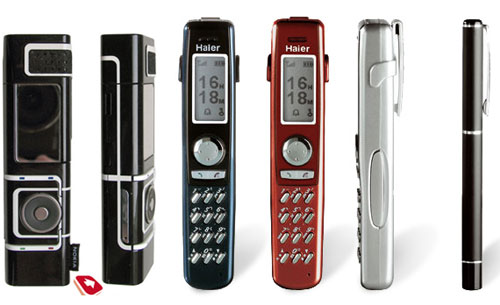
Nokia has intended the model for a fashion segment from the beginning and that is the reason of those various materials that are used in the device. First, the screen is mirror-like and it may be used as a real mirror in the standby mode. Second, the loudspeaker gap is protected with a chamois insertion and is firmly integrated into the body. The same chamois insertion is on the right-side surface of the device and here it's necessary for sliding the device into a camera mode. An evident minus of the chamois insertions is they are easily soiled, dust and dirt from a lady's handbag are seen on them. They may be cleaned with a special brush for such surfaces and many of those who wear chamois clothes do surely have this thing. Third, a small tag with the manufacturer's name may be seen on the right surface. That is a complete copy of similar labels of famous clothes brands and that gives some similarity with a fashion accessory to the device.

The only one colour solution represented is black glossy plastic and fingerprints do stay on it. A cloth is not included into a package but a case of soft leather fully replaces it. The case is red inside and if carrying the device in the case the number of grease stains surprisingly decreases. The accessory is really stylish and matches the whole device greatly. There is a white edging on the top end of Nokia 7280 and a red LED is hidden behind it. In the standby mode it turns on smoothly lighting the top end in a circle that looks stylishly. This indication also works to alert various events. The device put in the case is seen anyway and then an edge of the inner part of the case and a top of the device. An interesting hint appears when the red edge of the case calls up with the lighting.

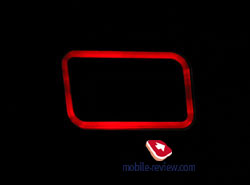
The accessories included into the package are worth telling about separately. And now I'd like to note only there is a strap that is fixed to a staple on the bottom end of the device. The strap is made in the same key like the case and has a silvery insertion besides.
Let's go back to the screen of the device. It has a specific position due to a specific form of the phone. The screen is placed horizontally (top-down). That means to work comfortably you'll need to hold the device not vertically but horizontally. Considering the fact the phone weights 84 grams you'll find no problems using it this way. The total size of the model is 115x32x19 mm and it perfectly fits a lady's handbag or a pocket. Though it seems a sin to hide it from the others' eyes and the device is probably better to hang on your neck.

The resolution of the 65K TFT screen is 104x208 pixels (16x30 mm). When displaying an SMS the screen shows up to 4 text lines and one service line (a headline). Due to the position of the screen all the tips for soft keys are placed in the right vertical column. The quality of the screen is not bad and the colours are bright and vivid. The preset pictures are not bad and show the screen possibilities well. In the sun it behaves well much better than other Nokia screens similar in characteristics. The reason seems to be in the mirror like cover.
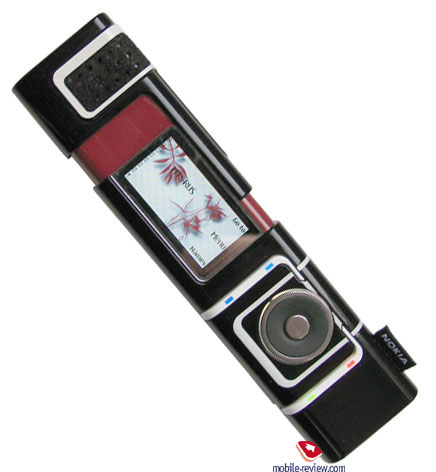
An obvious difference from other models is not only in the screen possibilities but in a complete absence of any keypad. Only two soft keys are seen under the screen a control element resembling a loudspeaker is a bit lower and two buttons to call and end call are under it. Saying a control element we mean a usual Navy Wheel that came to the model from the automodels in particular Nokia 810. The wheel helps to move along the menu, enter text and perform some other operations that are characteristic for a keypad in traditional phones.
The wheel may be turned in the horizontal line in two directions, a black insertion of rubber prevents a finger from slipping. The wheel is comfortable to work with a thumb of any hand you like. The OK button is integrated into the wheel. A white backlighting shines around the wheel and that makes a great visual effect.
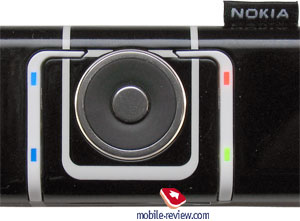
On the left-side surface you can see a polyphonic alert gap that is the second loudspeaker. An IrDA gap is a bit lower and it is almost not seen. A silvery piece of the body is seen under and here is a SIM-card holder. A special metallic stick is included into the package. That is necessary to insert into a special gap for opening the module. Also it may be opened with any sharp device like a pin or a paper clip. A standard package contains the second SIM-card holder, evidently the manufacturers considered a user might loose the one preset when the device fell.
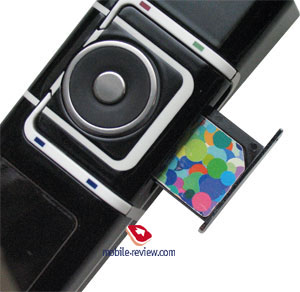
The device is impossible to disassemble except for a changeable panel near the camera that is enough to slide the device apart and pull the panel. There is a bar-code sticker on the top and a usual user has nothing interesting to see here (there is nothing to clean here when using an accumulator). And looking on the red LED is also makes no great interest.

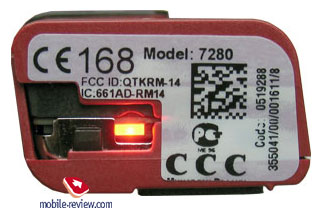
There is a microphone gap, a headset and a charger connector on the bottom end. A user has no access to the battery integrated into the phone. The battery is 700 mAh BL-8N. And according to the manufacturer it works for 240 hours in the standby mode and up to 3 hours in the talk mode. In Moscow the device worked for about 2 days in case of 90 minutes of talks and minimum of other functions. Longer working time was achieved when decreasing the talk time to 60 minutes (3 days). Using the bluetooth actively tells upon the working time not greatly, that would be two days without working at night. Comparing the device with standard Nokia phones in the working time I had a felling the battery has less capacity since there are no evident reasons for high energy consumption. Turning the LED off increases the working time for about 3 hours and that is not critical. Full recharging takes about 1 hour 10 minutes.
I'd like to note the charger included into the package is very qualitative and the wire is hidden behind rubber insertions and the charger matches the device in style.
The only thing left to tell about is the device may slide apart (do you remember a chamois side insertion?). A VGA-camera lens is seen on the back panel then unfortunately the device doesn't turn the camera interface automatically on opening (that would be logical and there is something similar in Nokia 6650). The device may be opened with one hand but that will take some effort. When the device is used actively the chamois insertion comes unstuck. Girls will find it easier to open the device with two hands. At the incoming call opening the device means answering on the call and closing it will end the call. In principle the mechanism is like an active flip or a slider in behaviour (and the device is actually a sort of a slider).
No comments:
Post a Comment